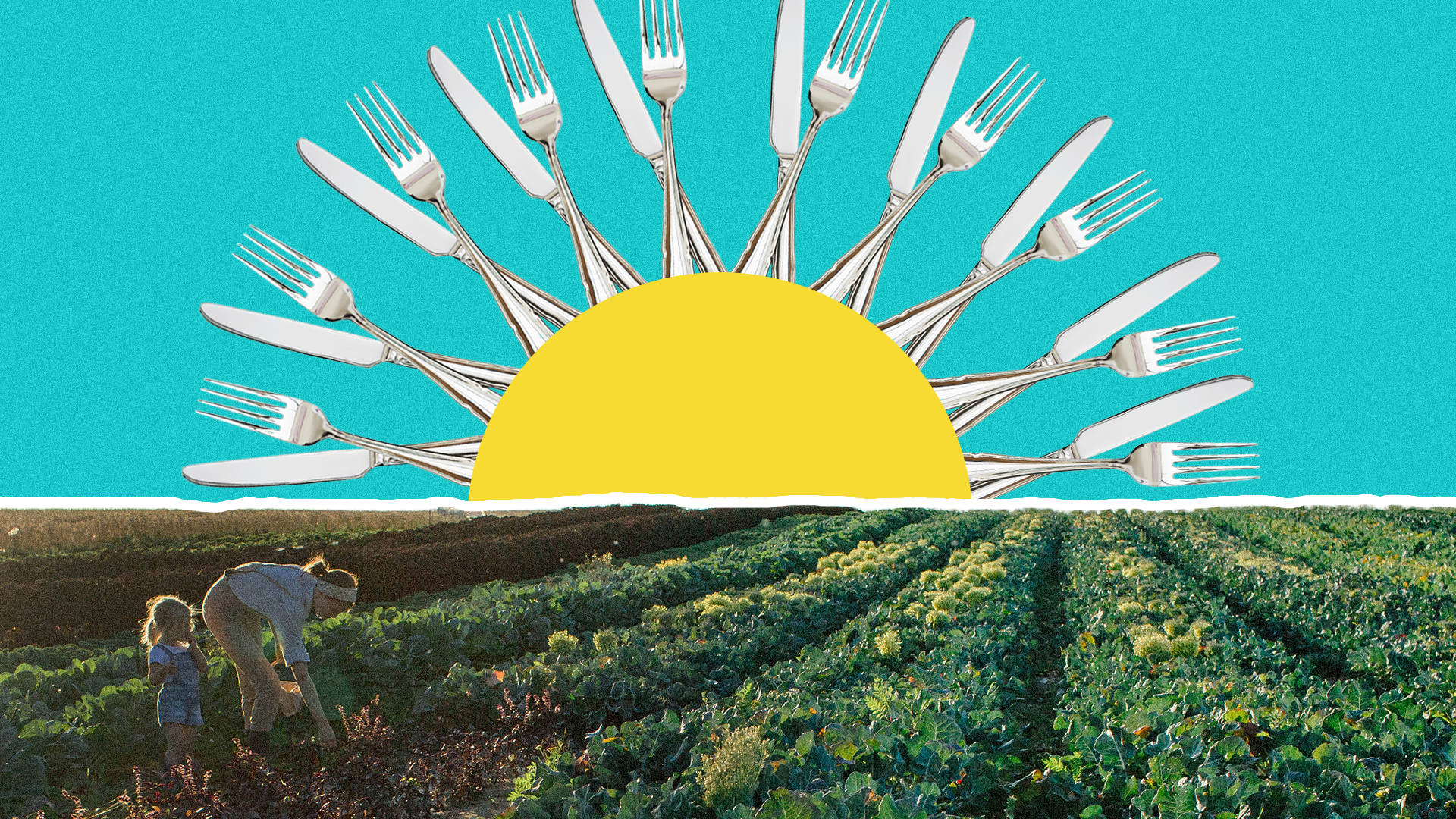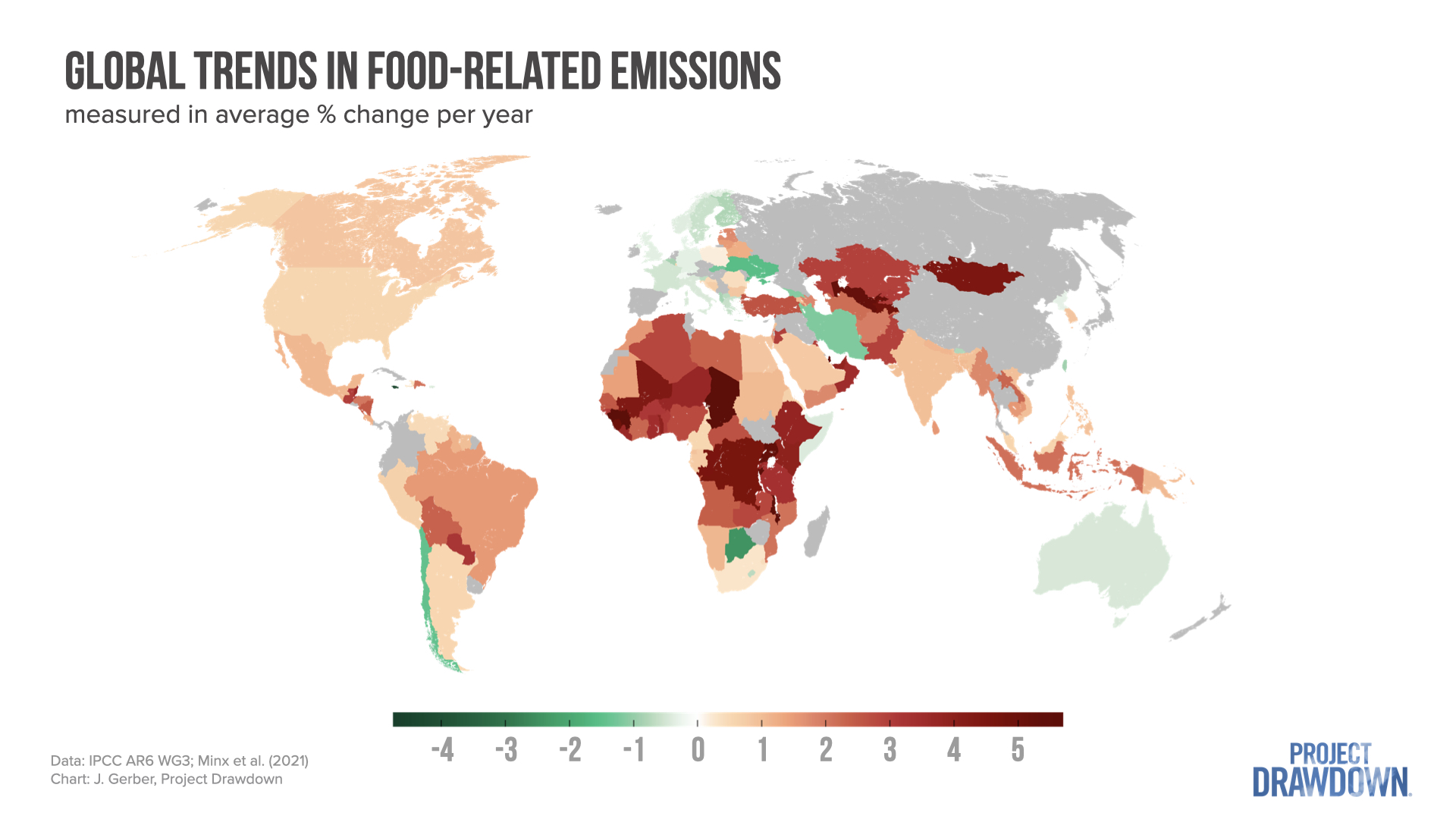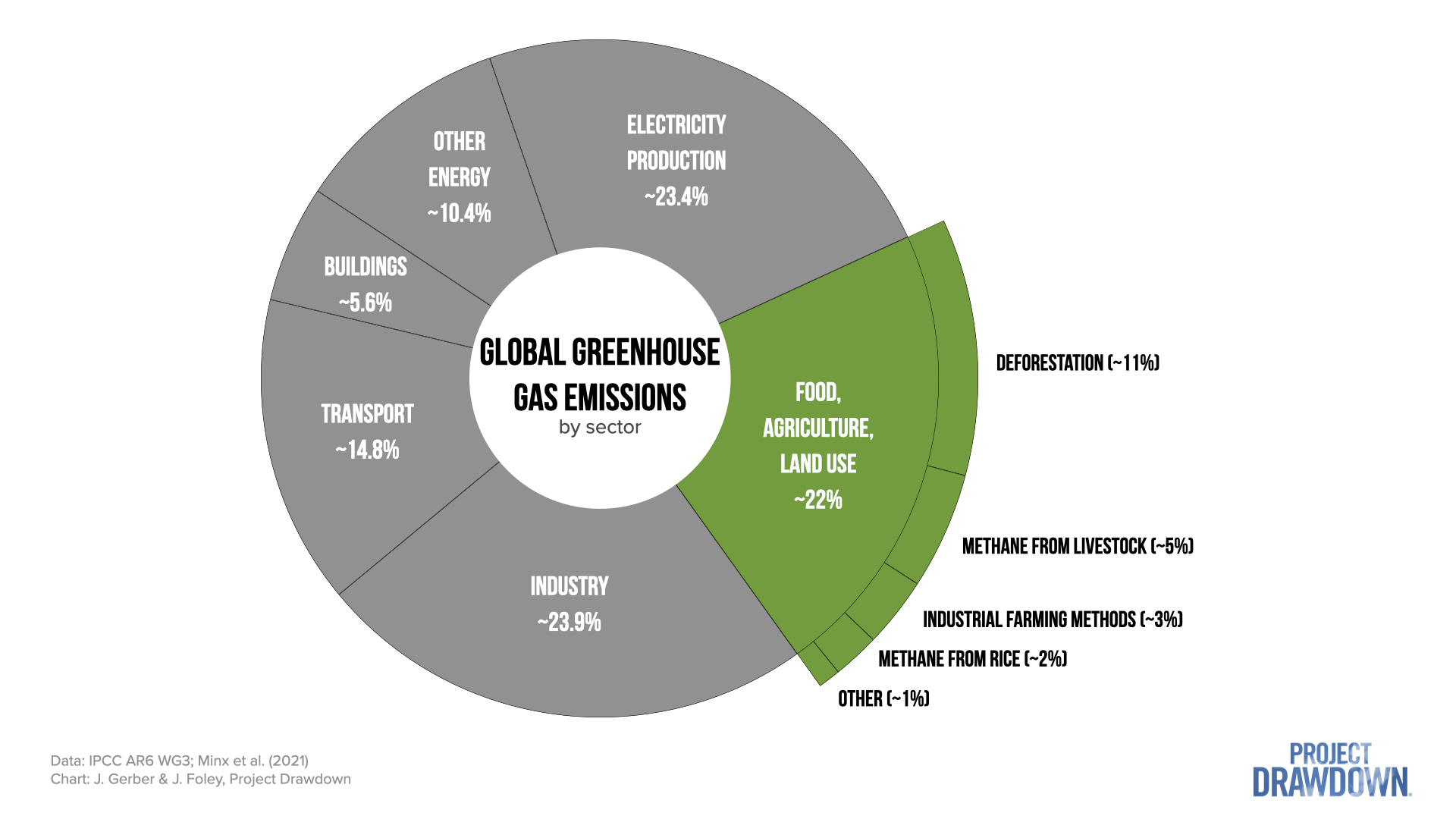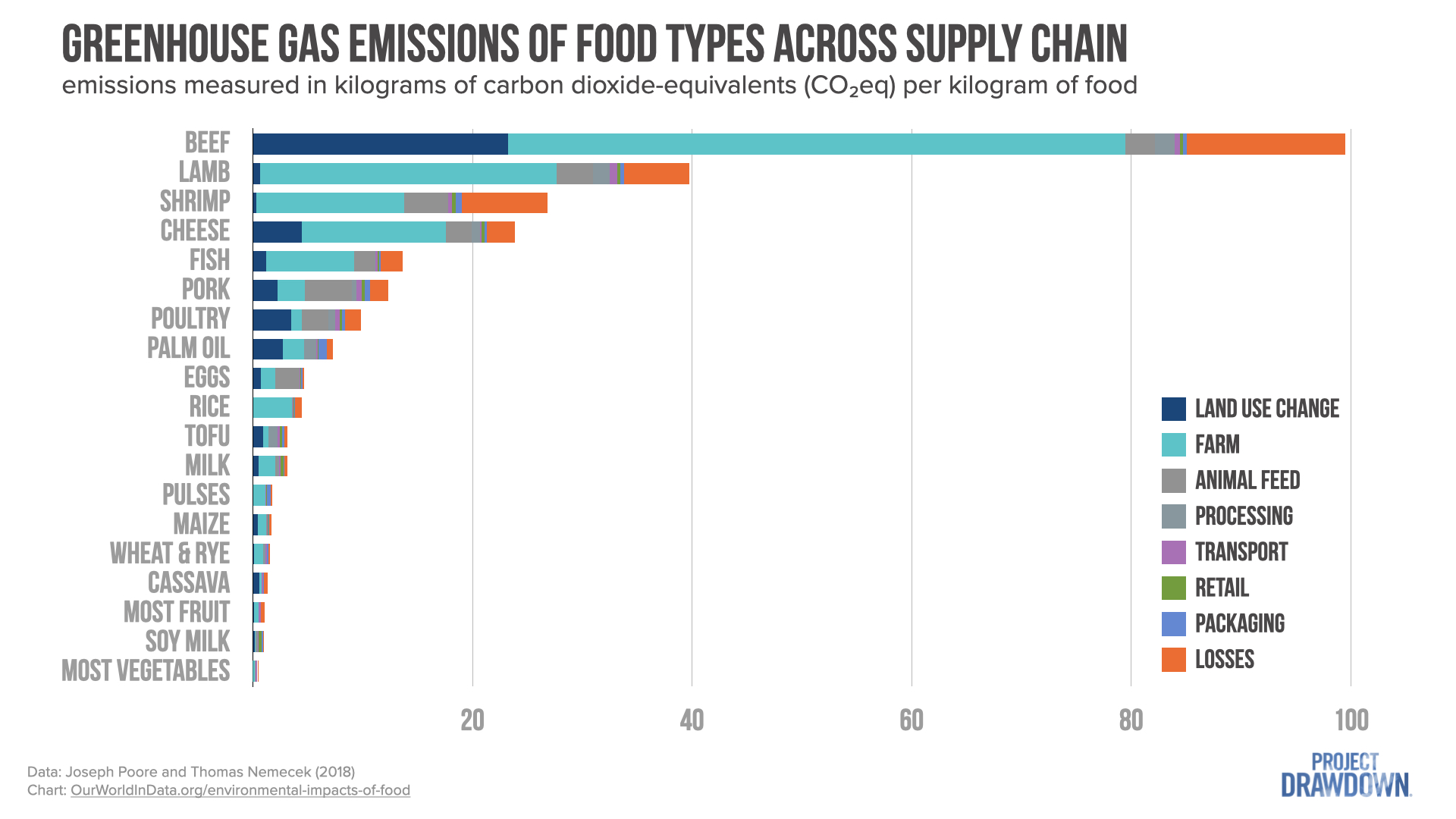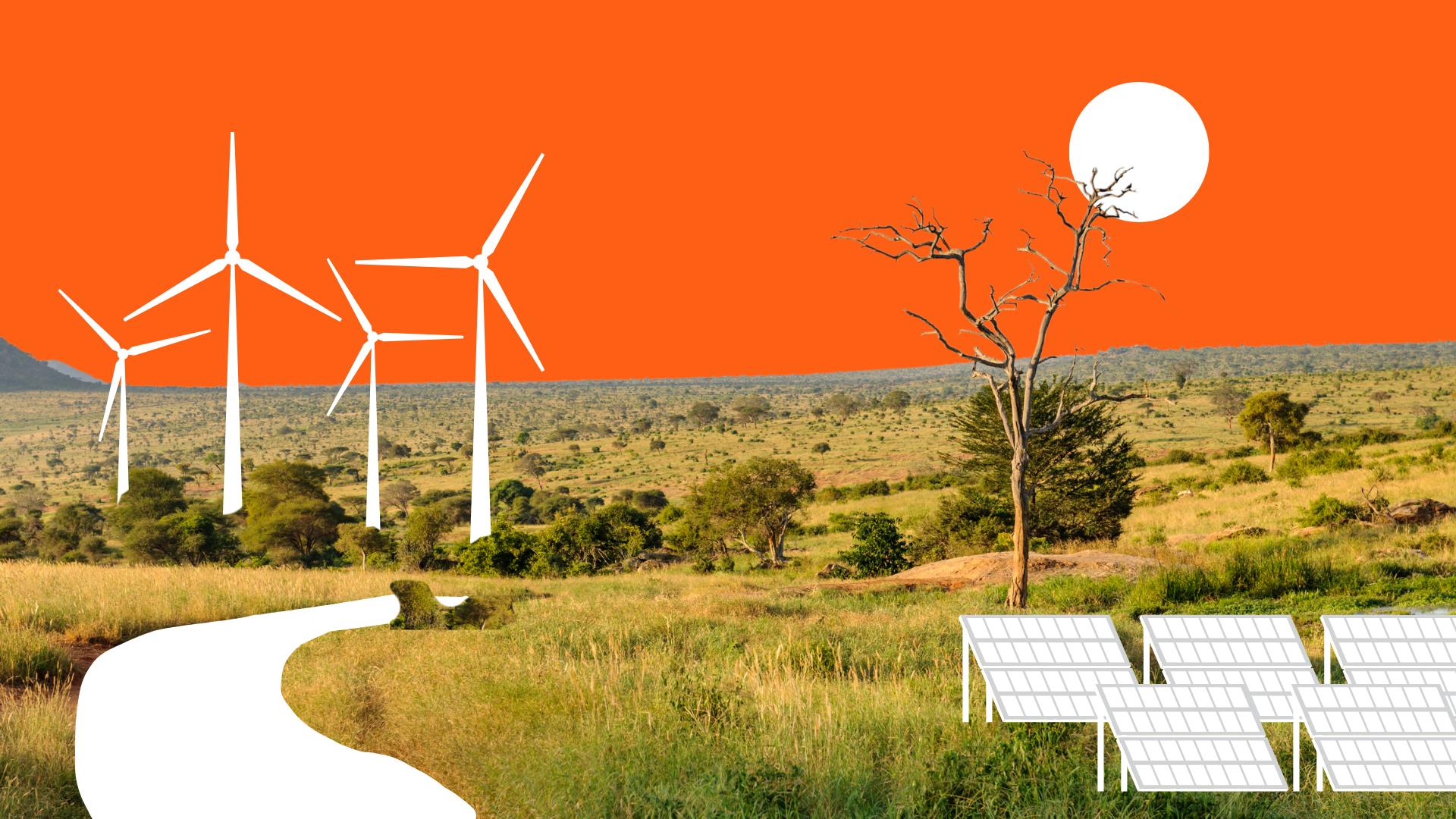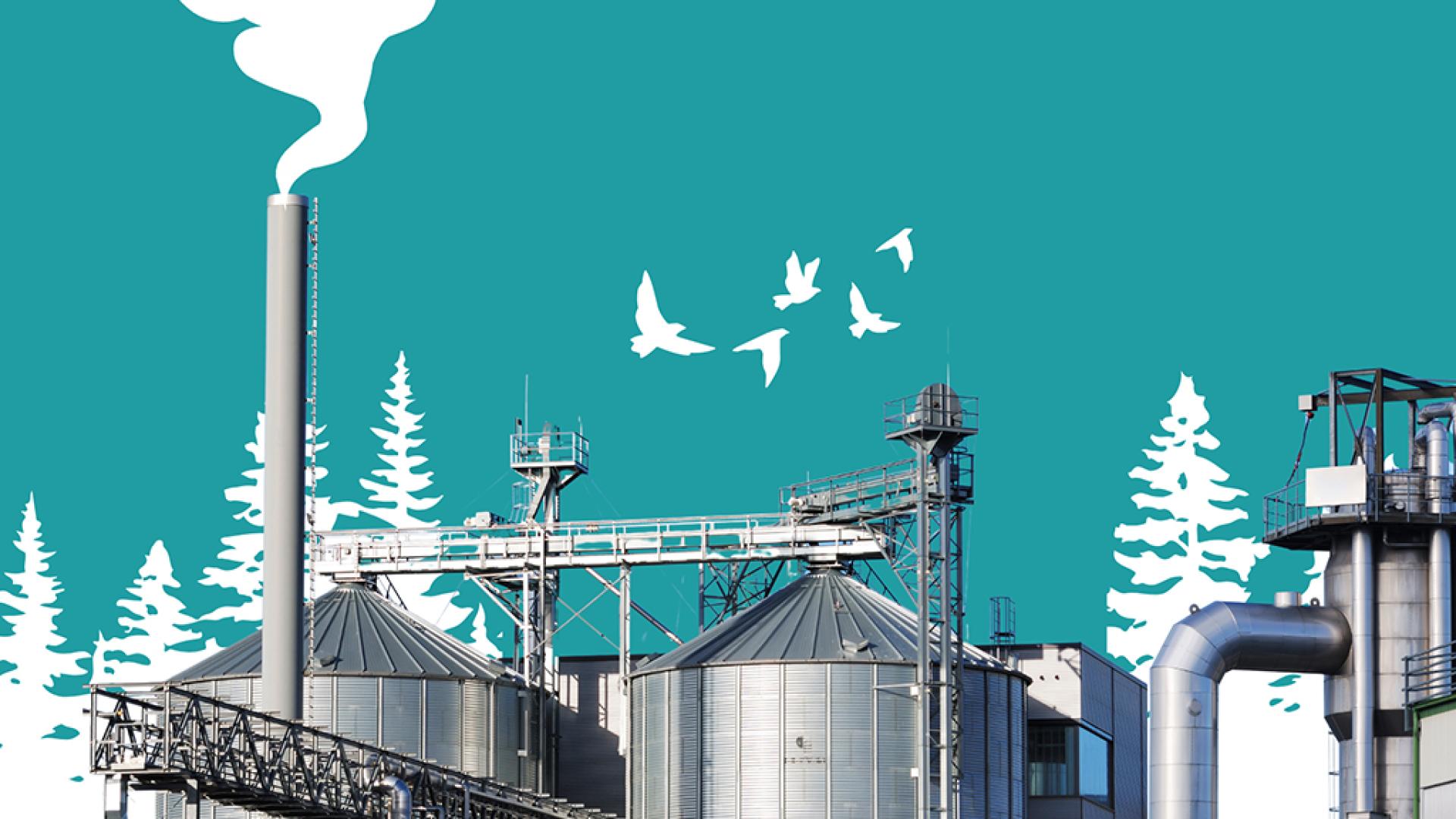Most of this land is used for animal agriculture. Combining the land used for grazing with the land used to grow animal feed, we find animal agriculture uses around 29% of Earth’s land. All other agriculture – for plant-based food, biofuels, and other uses – comprises the remaining 9%.
In short, the food system dominates our planet. And animals dominate our food system.
The environmental impacts of the food system are enormous. The food system’s giant footprint makes it the largest driver of habitat and biodiversity loss on Earth. Nothing else comes close. The food system is also by far the biggest user of water on Earth, siphoning off around 70% of the world’s water withdrawals. (This figure climbs to an astonishing ~85% if you consider “consumptive” use, where water withdrawals are not returned to the same watershed.) It is also the most pronounced water polluter worldwide, mainly due to fertilizer runoff that has more than doubled the flows of nitrogen and phosphorus through the Earth’s watersheds and ecosystems. This has led to heavily polluted rivers, lakes, and coastal ecosystems across the planet.
Food Has a Huge Climate Problem
Beyond its massive impacts on land, water, and ecosystems worldwide, the food system also contributes to climate change. While most people typically focus on fossil fuels as the primary driver of climate change – which is true – we must also evaluate the substantial role of farming, land clearing, and the rest of the food system.
According to the IPCC and other sources, direct emissions from food, agriculture, and land use release around 22% of the world’s greenhouse gases. That’s roughly equivalent to the emissions from the electricity or industry sector – yet food-related emissions still get far less attention from policymakers, investors, philanthropists, and activists.


